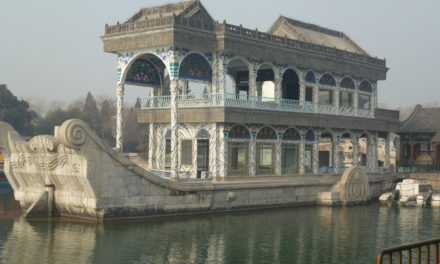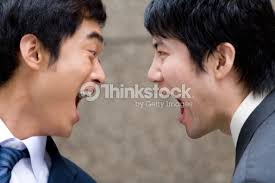HONG KONG — After spending a year in China teaching English, it was time to head home. When I told a friend I was stopping in Hong Kong on my way back to the United States, he said, “Makes sense. In Hong Kong, you’ve got one foot in the East and one in the West.’’
Indeed, 17 years after the British returned control of the city to China, Hong Kong remains a separate and special place. While it’s now officially governed by Beijing, the Pearl of the Orient is designated as a Special Administrative Region with freer political, economic, and legal systems than on the communist mainland.
Hong Kong has other distinctions as well. It has more skyscrapers than any other city — twice as many as runner-up New York — and it’s the luxury shopping capital of the world. You see a lot of Buddhist and Taoist temples here, but money is the chief religion and the gods are named Mercedes, Cartier, and Gucci.
I arrived at Hong Kong’s modern, bustling airport on a sweltering summer day on China’s southeast coast. The airport is on Chep Lap Kok, one of more than 200 islands in the territory. The two most populous areas in this jam-packed city — 7 million people are squeezed into just over 400 square miles — are Hong Kong Island and Kowloon Peninsula, where most of the skyscrapers, hotels, shopping, and tourist sites are.
I hadn’t visited Hong Kong in 26 years, so I decided to refresh my memory with one of those double-decker bus tours that let you get on and off at designated sites. We passed by such landmarks as the 88-story Two International Finance Centre, the spaceship-shaped Hong Kong Convention and Exhibition Centre, 33-acre Kowloon Park, and the Ladies Market, an outdoor haven for bargain shoppers that, despite its name, includes products for both sexes.
I got off the bus to explore Peak Tower, a shopping complex with a wok-shaped roof that sits near the top of Victoria Peak, the highest point on Hong Kong Island. I rode a funicular railway to the tower, then took a series of escalators to a terrace that offers spectacular views of the Hong Kong skyline and the surrounding mountain peaks. There are usually long lines in the summer, but I lucked out by getting there early in the afternoon and quickly getting a seat on the tram.
Another high point — literally and metaphorically — is the Mid-Levels Escalator. Billed as the world’s longest covered outdoor escalator, it’s really a 2,600-foot network of moving staircases and walkways that help commuters navigate the hilly Central and Western Districts of Hong Kong Island.
The escalators pass by dozens of upscale bars and ethnic restaurants that attract thirsty, hungry commuters on their way home from work. I’ve never seen so many cuisines in such a small area: In just one block, there were Vietnamese, Argentine, Greek, Italian, French, Chinese, and Japanese restaurants. I stopped at a Tex-Mex joint, where I had a tasty enchilada packed with chicken, cheese, refried beans, and peppers. It was like going to Tijuana and ordering chow mein.
At night, I walked along the Avenue of Stars, a promenade on the Kowloon side of Victoria Harbor that is the city’s version of the Hollywood Walk of Fame. The walkway is lined with plaques honoring Hong Kong movie stars, complete with their handprints. It also has a life-size statue of martial arts legend Bruce Lee in a fighting stance.
Just about every tourist stops in front of the statue and mimics Lee’s pose for a photograph. In my awkward picture, I resemble a mime pressing his hands against one of those imaginary walls.
As darkness fell, I stayed on the promenade and watched the “Symphony of Lights,’’ the nightly multimedia show that features music, lasers, and searchlights. Skyscrapers on both sides of the harbor lighted up like Christmas trees in a dazzling multicolor display that had everyone gazing skyward except the little boy next to me, who was busy playing games on his mother’s iPhone.
The following day, I escaped the urban jungle and visited some of the quiet, scenic escapes just outside the central city. I rode along the southern coast of Hong Kong Island, a route that passes by beautiful beaches, lush golf courses, posh country clubs, and green mountains.
We drove by Stanley, best known for its pristine sand beaches and thriving marketplace. It’s also the home of Murray House, a three-story, Victorian-era colonial building that was once a barracks for the British Army. It was originally located in the Central district, but was dismantled in 1982 and later rebuilt on the Stanley waterfront, where it now houses bars, restaurants, and a maritime museum.
I stopped in Aberdeen, in the southwest part of the island, a former fishing village now packed with high-rise apartments. The harbor still has many ramshackle fishing boats and houseboats, but the main attraction is Jumbo Kingdom, a pair of giant floating restaurants designed to look like an ancient Chinese imperial palace.
I toured the harbor on a rickety sampan before eating lunch at the larger of the two restaurants with a couple from San Antonio whom I met on the bus. We shared fried crab, sliced pork, and a rice-and-vegetable dish. The food was mediocre and overpriced, but we enjoyed the setting and took a bunch of tacky pictures posing with the “ancient’’ scenery.
Hong Kong has some of the most luxurious hotels in the world, but I chose the budget route. In a flashback to my youth, I stayed at the Yesinn-Causeway Bay hostel with a bunch of 20-something backpackers and slept in a dorm-style room with nine bunk beds for about 30 bucks a night.
The informal lounge where everyone hung out was like a mini United Nations. A young Welshman with a buzz cut had come to study kung fu. A middle-aged tourist guide from Taiwan was in town to take a wine connoisseur’s test. A 19-year-old Finnish gymnast was visiting friends and checking out the hip-hop dance scene.
I felt right at home until the college-age crowd left to go nightclubbing at midnight. They politely asked me to join them but I declined, citing various infirmities.
However, I was healthy enough to make the one-hour ferry ride to Macau, the former Portuguese colony that is now the world’s top gambling mecca. When I first visited Macau in 1988, it had one dinky casino. Now it’s Las Vegas on steroids, a neon playground with five of the world’s 10 largest casinos and annual revenue greater than all US casinos combined.
The biggest gambling palace is The Venetian Macau, which has 3,400 slot machines, more than 800 gaming tables (mostly for baccarat, by far the most popular game among Chinese gamblers) and enough smokers to form a mushroom cloud over the city.
The Venetian is located on the Cotai Strip, a section of reclaimed land that connects what used to be two separate islands. There’s another, even larger area of casinos a short ride away on Macau Peninsula, and business is booming so quickly that another nearby island, Hengqin, is being developed to handle the spillover.
I wanted to play craps at the Venetian, but there was only one table in the entire casino, so I had to ask directions several times and wander around for 20 minutes before finding it. There was no room at the table, though, so I left to explore the mammoth Venetian complex that covers 10.5 million square feet — enough to hold 56 football fields or 100 jumbo jets.
Like its sister hotel-casino in Vegas, the Venetian offers gondola rides on a man-made canal that runs through its shopping area. You can have your picture taken with costumed pirates, who once roamed the seas here instead of hotel lobbies.
Macau is renowned for its high-stakes baccarat games. At one table, where the maximum bet was 2 million Hong Kong dollars ($258,000), one player was routinely betting $100,000 per hand. He lost more than $1 million while I was watching, though I have a feeling that was cab fare for him.
My bankroll wasn’t quite as large, so I ended up playing poker at an automated, no-dealer table, where you compete against real players but all the action takes place on personal video screens. There are so many video gambling games in Macau that the casinos sometimes feel like arcades, albeit very expensive ones.
While I lost money playing poker, I did have one lucky moment. When I ordered lunch at the Hard Rock Cafe, I got a 70 percent discount because I had a credit card with the consecutive numbers 4-3, making me eligible for a promotion celebrating the restaurant’s 43d anniversary.
Not exactly hitting the lottery, but gamblers can’t be choosy.




